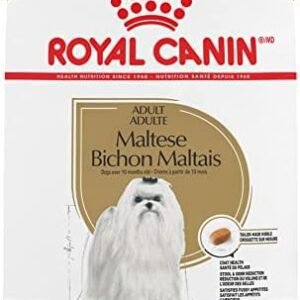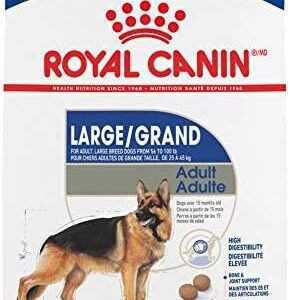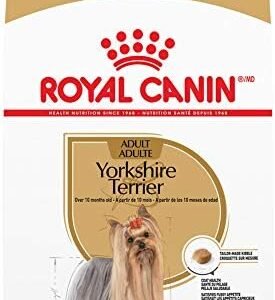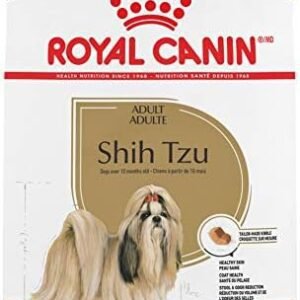Introduction
Have you ever pondered upon the question of what dogs and sweet treats like sugar have in common? It may come as a surprise, but the topic of “Can Dogs Eat Sugar?” is one that’s worth exploring. As humans, we often enjoy indulging in sugary delights, but when it comes to our four-legged companions, the picture is quite different.
Our canine friends have a different set of dietary requirements and sensitivities. While sugar is one of the most prevalent ingredients in our culinary world, we must exercise caution when considering whether our furry friends can partake in this sweet indulgence.

In this article, we will delve into the intriguing subject of whether dogs can eat sugar. We will explore the pros and cons of feeding sugar to your dog, shed light on how much is too much, and offer guidance on what to do if your dog accidentally consumes this tempting, yet potentially harmful, substance. It’s crucial to understand the implications of sugar consumption for dogs and what responsible pet ownership entails. So, let’s embark on this informative journey to ensure the well-being of our beloved pets.
Table of Contents
Can dogs eat sugar?
Sugar is a ubiquitous part of our diets, and many dogs may be enticed by its sweet taste. But the question remains: Is sugar safe for dogs to consume? Let’s delve into this matter, explore the nutritional aspects of sugar, and weigh the benefits and drawbacks.
Nutritional Facts of Sugar
Before we assess whether dogs can safely eat sugar, it’s essential to understand its nutritional composition. Sugar, primarily in the form of sucrose, is a carbohydrate that provides a quick source of energy for both humans and dogs.
Here are the nutritional facts of sugar:
- Calories: One gram of sugar contains approximately 4 calories.
- Carbohydrates: Sugar is composed entirely of carbohydrates. It’s a simple carbohydrate that rapidly breaks down into glucose, providing a quick energy boost.
- Nutrients: Unfortunately, sugar lacks essential nutrients like vitamins and minerals. It doesn’t offer any beneficial nutrients to dogs, making it a source of empty calories.
- Glycemic Index: Sugar has a high glycemic index, meaning it causes a rapid spike in blood sugar levels when consumed.
Drawbacks of Sugar for Dogs
While sugar can provide a quick burst of energy due to its carbohydrate content, it also comes with a range of drawbacks when consumed by dogs:
Weight Gain: Sugar is calorie-dense and can contribute to weight gain in dogs when consumed in excess. Obesity in dogs is a significant health concern, leading to various health issues.
Dental Problems: Sugar can lead to dental problems in dogs. When ingested, it can promote the growth of harmful bacteria in the mouth, potentially causing dental cavities and gum disease.
Diabetes: High sugar consumption may lead to insulin resistance and increase the risk of diabetes in dogs. This metabolic disorder can have severe health consequences.
Hyperactivity and Sugar Rush: Just like in humans, dogs may experience a temporary sugar rush after consuming sugary treats. They might become hyperactive for a short time, followed by a sugar crash.
Digestive Upset: Sugar can lead to gastrointestinal upset in dogs. It may cause symptoms like diarrhea or an upset stomach, particularly in dogs with sensitive digestive systems.
Decreased Appetite: Excessive sugar intake can result in decreased appetite for nutritious dog food. Dogs may prefer sugary snacks over their regular meals, which can affect their overall diet and nutrition.
Given these drawbacks, it’s clear that sugar should be limited or avoided in a dog’s diet. While it’s not inherently toxic to dogs, it provides no essential nutrients and poses several health risks, especially when consumed in excessive amounts. As responsible pet owners, it’s our duty to prioritize our dog’s health and well-being.
Sugar and the Canine Diet
To maintain the health of your canine companion, sugar should be considered an occasional treat at best. Dogs do not require sugar in their diets, and their primary source of nutrition should come from balanced, high-quality dog food. Feeding dogs a diet rich in essential nutrients, including protein, fats, vitamins, and minerals, is essential for their overall well-being.
In essence, sugar should complement, not replace, your dog’s primary diet. Occasional, small quantities of sugar are generally not harmful, but it’s crucial to exercise moderation and be mindful of the potential adverse effects. Instead of relying on sugary treats, explore healthier and dog-friendly alternatives that provide both enjoyment and nutritional benefits.
In the next sections, we will discuss how much sugar is safe for dogs, the potential risks associated with sugar consumption, and ways to make your dog’s meals more enjoyable and wholesome. We’ll also provide answers to frequently asked questions about dogs and sugar, helping you make informed decisions regarding your dog’s diet and well-being.
How Much Sugar Can a Dog Eat?
Feeding your dog is an act of love and responsibility. We all want to treat our furry companions, and it’s not uncommon for dogs to enjoy an occasional sweet snack. However, it’s vital to understand that moderation is the key when it comes to feeding sugar to your dog.
Here are some important considerations when it comes to the amount of sugar that your dog can safely consume:
1. Emphasize Moderation:
The most crucial aspect of feeding sugar to your dog is moderation. Treats, whether they contain sugar or not, should not account for more than a certain percentage of your dog’s daily calorie intake. A good rule of thumb is to keep treats to less than 10% of your dog’s daily caloric needs. This ensures that your dog receives the necessary nutrition from their primary diet while enjoying occasional treats.
2. Start Small:
If you decide to offer your dog a sweet treat, start with a small piece of sugar or a sugary snack. Every dog’s tolerance for sugar varies, and it’s important to observe how your dog reacts to it. Just like humans, some dogs may have a sweet tooth, while others may not be as interested in sugary foods. Monitoring your dog’s reaction will help you gauge their tolerance and preferences.
3. Prepare Sugar Safely:
When offering sugar to your dog, it’s crucial to prepare it safely. This means avoiding sugar substitutes or artificial sweeteners like xylitol, which can be toxic to dogs. Stick to regular sugar in its various forms, like table sugar (sucrose), if you choose to share a sugary treat with your dog. Always check the ingredient list on any packaged treats to ensure they do not contain harmful additives or artificial sweeteners.
4. Consider Your Dog’s Size and Breed:
The size and breed of your dog can influence how much sugar they can safely tolerate. Larger dogs typically have a higher tolerance for sugar than smaller breeds. Their increased body weight and metabolic rate can handle a bit more sugar. Conversely, smaller dogs should be given smaller portions to avoid overloading them with excess calories and sugar. Consider the specific needs of your dog when offering sweet treats.
5. Appropriate Serving Sizes:
Serving sizes of sugar should be determined based on your dog’s weight. As a general guideline, it’s recommended to keep sugar servings for dogs under 10 grams per day. For small breeds, it’s wise to stay at the lower end of this range, while larger dogs may tolerate a bit more. However, it’s essential to keep in mind the overall daily caloric intake and not solely focus on sugar quantity.
While it may be tempting to indulge your dog’s sweet cravings, it’s important to prioritize their health and well-being. Dogs do not require sugar in their diets, and their nutritional needs should be met with high-quality dog food designed to provide the right balance of essential nutrients. Instead of sugary treats, consider offering healthier, dog-friendly alternatives that provide enjoyment without the potential adverse effects associated with sugar.
In the next sections, we will explore the potential risks linked to sugar consumption in dogs, how to make your dog’s meals more enjoyable and nutritious, and provide answers to frequently asked questions regarding dogs and sugar. Understanding the limitations and benefits of sugar in your dog’s diet will help you make informed decisions about their dietary choices and ensure their long-term health and happiness.
Risks of Feeding Sugar to Dogs
While sugar can offer a brief burst of energy and taste good to dogs, it’s essential to recognize that there are inherent risks associated with feeding sugar to your furry friend. Here, we’ll delve into the potential issues and hazards related to sugar consumption in dogs:
1. Food Allergies:
Just like humans, dogs can also be allergic to certain foods, including sugar. Food allergies can lead to a range of symptoms, which may include digestive issues, skin problems, and even behavioral changes. If your dog shows signs of an allergic reaction after consuming sugar or sugary treats, such as itching, diarrhea, vomiting, or behavioral changes, it’s crucial to consult with your veterinarian to identify and address the underlying cause.
2. Short-Term Signs of Food Intolerance:
Even if your dog doesn’t have a full-blown food allergy to sugar, they may still experience short-term signs of food intolerance. Consuming sugar in large quantities or in sensitive dogs can lead to gastrointestinal distress. This can manifest as diarrhea, upset stomach, excessive gas, and abdominal discomfort. It’s essential to be observant and recognize these symptoms if they occur after your dog has had sugar.
3. Potential Hazards of Certain Components:
Sugar, while sweet and tasty, can have adverse effects on a dog’s health. One significant concern is that excessive sugar consumption can lead to obesity in dogs, which, in turn, can result in various health problems, such as diabetes, joint issues, and heart disease. Additionally, sugar can contribute to dental problems in dogs. The sugars in many human sweets can promote the growth of harmful bacteria in a dog’s mouth, leading to dental decay and gum disease.
4. Allergic Reactions:
In some cases, sugar-containing treats may also include other ingredients that can trigger allergic reactions in dogs. It’s important to be vigilant when offering sugary snacks to your pet and monitor their behavior and health afterward. Signs of an allergic reaction can vary but may include itching, hives, swelling, digestive issues, or changes in behavior. Always check the ingredient list and consult with your veterinarian if you suspect an adverse reaction.
5. Issues from Sugar Consumption:
Long-term sugar consumption can lead to a range of health problems in dogs. As mentioned earlier, obesity and dental issues are common consequences. Furthermore, dogs that consume excessive amounts of sugar are at a higher risk of developing diabetes. Diabetes can be a challenging and costly condition to manage in dogs and requires lifelong care.
6. Signs and Symptoms of Adverse Reactions:
Signs and symptoms of adverse reactions to sugar or sugary treats in dogs can include:
- Digestive issues, such as diarrhea or vomiting.
- Excessive thirst and urination.
- Changes in energy levels.
- Weight gain.
- Dental problems like tooth decay and gum disease.
- Increased risk of diabetes.
- Behavioral changes.
- Allergic reactions, such as itching, hives, or swelling.
Recognizing these signs and acting promptly is crucial. If you observe any unusual behavior or health issues in your dog followingsugar consumption, it’s advisable to consult your veterinarian for a professional evaluation and guidance on how to proceed.
In the following sections, we will explore methods to make your dog’s meals more enjoyable and nutritious without relying on sugar, along with answers to frequently asked questions regarding dogs and sugar consumption. Understanding the potential risks and drawbacks of sugar in your dog’s diet is crucial for ensuring their well-being and health in the long run.
How to Feed Sugar to Your Dog and Make It Enjoyable for Them
While the risks of feeding sugar to dogs are significant, there may be occasions where you want to treat your furry friend to something sweet. Here, we’ll explore safe and enjoyable ways to feed sugar to your dog:
1. Moderation is Key:
If you decide to give your dog a small amount of sugar as an occasional treat, moderation is essential. Sugar should never be a substantial part of your dog’s diet. Just like with any treat, it’s crucial to ensure that sugary snacks do not make up more than a certain percentage of your dog’s daily calorie intake. Consult with your veterinarian to determine the appropriate portion size for your specific dog based on their weight, size, and activity level.
2. Observe Your Dog’s Reaction:
When introducing sugar into your dog’s diet, start with a small piece and observe how your dog reacts. Some dogs may enjoy the taste of sugar, while others might not be interested. It’s important to be attentive to your dog’s preferences and any adverse reactions, such as digestive issues or changes in behavior.
3. Homemade Treats and Snacks:
Making homemade treats and snacks for your dog can be a fun and creative way to incorporate sugar safely into their diet. Keep in mind that when preparing homemade treats, it’s essential to use dog-safe ingredients and follow recipes specifically designed for dogs. Commercial sugar is typically not recommended, as it may contain harmful additives, such as xylitol.
Here are a few ideas for homemade dog treats that include sugar:
Peanut Butter and Banana Bites: Mix mashed banana with unsweetened peanut butter and a touch of honey, then freeze the mixture in small portions for a delicious and refreshing treat.
Oatmeal and Honey Cookies: Combine oats, honey, and a mashed banana to create a simple, yet tasty, cookie recipe. Bake and serve to your dog as an occasional snack.
Frozen Yogurt Popsicles: Mix plain, unsweetened yogurt with small pieces of fruit (like blueberries or strawberries), pour the mixture into ice cube trays, and freeze for a cool, refreshing treat during hot weather.
These homemade treats allow you to control the amount of sugar and ensure that your dog’s snacks are free from potentially harmful additives found in some commercial dog treats.
4. Enhancing Meals:
If you’d like to enhance your dog’s regular meals, there are dog-safe ways to do so without resorting to sugar. You can incorporate fresh, healthy ingredients like lean proteins, vegetables, and fruits (in moderation) to make your dog’s meals more appealing and flavorful. Consult with your veterinarian or a canine nutritionist for guidance on how to create well-balanced and nutritious meals for your dog.
5. Fresh Fruits and Vegetables:
Rather than sugary sweets, consider using fresh fruits and vegetables to add variety and flavor to your dog’s meals. Apples, blueberries, carrots, and sweet potatoes are examples of dog-friendly options that can be added to your dog’s food. Always ensure that fruits and vegetables are prepared and served in a way that’s safe for dogs, and consult with your veterinarian to confirm which ones are suitable for your dog.
Remember that while sugar can be used in moderation to enhance your dog’s treats or snacks, it should not replace their primary diet. Overconsumption of sugar can lead to health problems, so always prioritize the nutritional balance of your dog’s meals. In the following section, we’ll address common questions about dogs and sugar consumption, providing further insights into this important topic.
10 FAQs About Dogs Eating Sugar
As concerned dog owners, it’s natural to have questions about what’s safe for our furry friends to consume. Here are answers to common questions about dogs and sugar:
1. Can Dogs Eat Sugar at All?
In general, dogs can consume sugar in small amounts, but it’s not recommended. While sugar is not toxic to dogs, overconsumption can lead to various health issues, including obesity, dental problems, and potentially more severe conditions like diabetes. It’s best to avoid giving sugar to your dog whenever possible.
2. What Happens if My Dog Eats Sugar?
If your dog accidentally ingests a small amount of sugar, it’s unlikely to cause severe harm. However, a larger intake can result in symptoms like digestive upset, increased thirst, and diarrhea. If your dog consumes a significant amount of sugar, consult your veterinarian for advice.
3. Can Dogs Eat Sugar-Free or Artificial Sweeteners?
Sugar substitutes, such as xylitol, can be extremely toxic to dogs and should be strictly avoided. Even small amounts of xylitol can lead to life-threatening conditions, including hypoglycemia (low blood sugar) and liver failure. Always check food labels for xylitol content and keep sugar-free products out of your dog’s reach.
4. Is Honey Safe for Dogs?
In small quantities, honey is generally safe for dogs and can even offer some health benefits. It contains natural sugars, but it’s crucial to use it sparingly and ensure that it’s free from any additives or artificial sweeteners. Some dog owners use honey as a natural sweetener in homemade dog treats.
5. What Are the Risks of Sugar for Dogs?
Sugar poses various risks to dogs, including weight gain, dental problems (such as cavities and gum disease), and an increased risk of developing diabetes. Furthermore, an excessive intake of sugary foods may lead to gastrointestinal discomfort, including diarrhea and upset stomach.
6. Can Dogs Eat Sugary Fruits?
Certain fruits are naturally sweet and can be enjoyed by dogs in moderation. Apples, blueberries, and watermelon are examples of dog-friendly fruits. When offering fruits to your dog, ensure that they are cut into bite-sized pieces and that any seeds or pits are removed.
7. How Can I Tell If My Dog Has Eaten Too Much Sugar?
Signs of sugar overconsumption in dogs can include increased thirst, excessive urination, digestive upset (vomiting or diarrhea), and hyperactivity. If you notice these symptoms, it’s important to reduce your dog’s sugar intake and consult with your veterinarian if issues persist.
8. Is There a Safe Sugar Intake for Dogs?
There is no specific daily sugar intake that applies to all dogs, as it depends on factors such as the dog’s size, activity level, and overall health. In general, it’s best to limit sugar intake and prioritize a well-balanced diet that meets your dog’s nutritional needs.
9. What Are Some Alternatives to Sugar for Dogs?
If you’re looking for sweet treats for your dog, consider using dog-safe alternatives like honey, peanut butter (without xylitol), or natural fruit flavors. You can also explore various dog-friendly recipes for homemade treats.
10. Can Sugar Cause Diabetes in Dogs?
While sugar consumption itself does not directly cause diabetes in dogs, it can contribute to obesity, which is a significant risk factor for diabetes. Obesity strains a dog’s pancreas and can lead to insulin resistance. A well-balanced diet and maintaining a healthy weight are essential to help prevent diabetes in dogs.
In conclusion, it’s best to minimize sugar intake in your dog’s diet and prioritize healthy, balanced meals. While small amounts of sugar are unlikely to cause harm, overconsumption can lead to a range of health problems. To ensure the well-being of your furry companion, consult with your veterinarian for personalized dietary recommendations.
Conclusion
In summary, the question of whether dogs can eat sugar comes with some important caveats. While sugar itself isn’t inherently toxic to dogs, it’s vital for dog owners to exercise caution and moderation when considering giving their furry companions sugary treats. As we’ve explored throughout this article, dogs can consume small amounts of sugar as an occasional treat, but there are risks associated with excessive or frequent consumption.
The potential risks of feeding sugar to dogs include weight gain, dental problems, digestive discomfort, and an increased risk of diabetes. It’s crucial to be aware of these risks and limit your dog’s sugar intake accordingly. Ideally, sugar should not be a staple in your dog’s diet, and any sugary treats should complement their primary nutrition, not replace it.
As responsible pet owners, it’s essential to prioritize our dogs’ health and well-being. Instead of sugary snacks, consider alternative options that are safe and healthy for dogs, such as natural fruits like apples, blueberries, or watermelon. These fruits are lower in sugar and offer a range of nutritional benefits.
We encourage you to share your experiences and tips on providing healthy treats for your dogs. If you have questions or comments about your dog’s diet, feel free to reach out to us in the comment section below. Your insights and questions help us create better resources for fellow dog owners. Together, we can ensure our dogs lead happy, healthy lives.
























